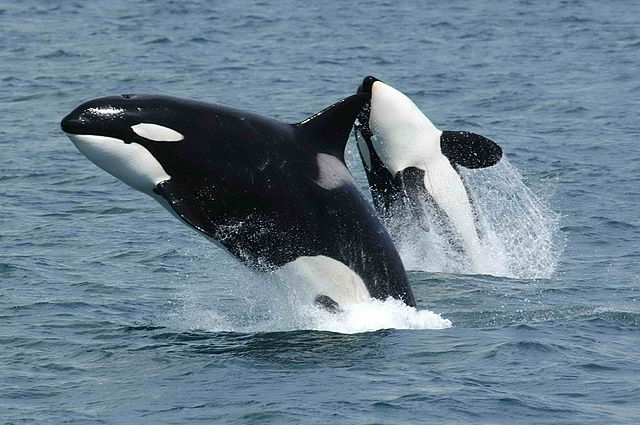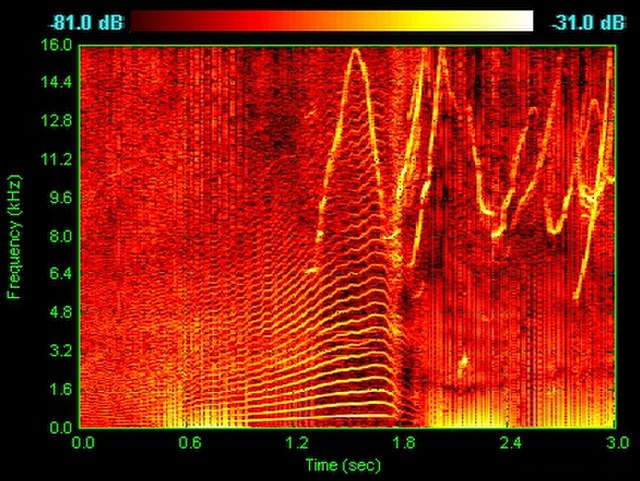Cetacean surfacing behaviour
Cetacean surfacing behaviour is a grouping of movement types that cetaceans make at the water's surface in addition to breathing. Cetaceans have developed and use surface behaviours for many functions such as display, feeding and communication. All regularly observed members of the order Cetacea, including whales, dolphins and porpoises, show a range of surfacing behaviours.
Humpback whale breaching
Humpback whale spinner-breaching
Dwarf sperm whale breaching
Orcas double-breaching off the south side of Unimak Island, Alaska
The toothed whales are a parvorder of cetaceans that includes dolphins, porpoises, and all other whales possessing teeth, such as the beaked whales and sperm whales. 73 species of toothed whales are described. They are one of two living groups of cetaceans, the other being the baleen whales (Mysticeti), which have baleen instead of teeth. The two groups are thought to have diverged around 34 million years ago (mya).
A whale as depicted by Conrad Gessner, 1587, in his Historiae animalium
Fossil of Squalodon
Pacific white-sided dolphins porpoising
Spectrogram of dolphin vocalizations. Whistles, whines, and clicks are visible as upside down V's, horizontal striations, and vertical lines, respectively.








